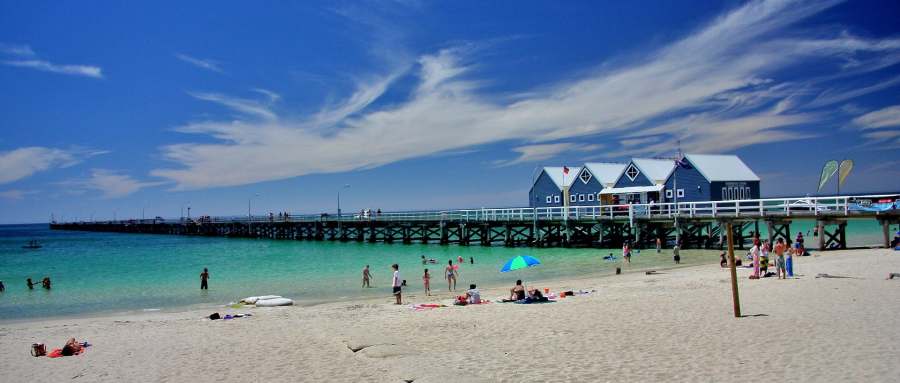Climate Change in Australia
Climate information, projections, tools and data

Western Australia's Changing Climate
Western Australia is already experiencing the impacts of climate change. The climate of Western Australia is projected to continue to change into the future.
Climate change projections of Australia’s future climate are provided at a national level through the Climate Change in Australia website. The Government of Western Australia, as part of the Western Australian Climate Policy (2020) , will implement the ‘Climate Science Initiative’, that will fund regional climate change projections, downscaled to higher resolution, for priority regions in Western Australia, including the north-west. These will become available sometime after 2022. Queries regarding this Initiative and other state based climate information can be made to the WA Department of Water and Environmental Regulation . These state-based projections will be provided at a higher resolution than the national projections, provide local-scale information and may better represent regional climate.
The climate statements below are largely based on the national projections data provided through the Climate Change in Australia website, and on past observational data from the Australian Bureau of Meteorology. Projections are focused on mid-century (2040-2059) relative to 1986-2005 (unless otherwise stated), in line with baselines used by the Intergovernmental Panel on Climate Change Fifth Assessment Report (IPCC AR5). Projections are based on a high emissions scenario (RCP8.5), and averages refer to Western Australia combined values.
Western Australia is already experiencing the impacts of climate change:
- All of Western Australia has warmed since 1910. Average temperature has increased by 1.3 °C since 1910.
- Since 1900, rainfall has increased over most of Western Australia, apart from the far west and southwest where it has declined.
- The decline in southwest Western Australia has been larger than anywhere else in Australia.
- The number of days with dangerous weather conditions for bushfires increased in nearly all locations.
- The number of tropical cyclones in the western part of the tropical cyclone-affected Australian region declined over the period 1981/82 – 2017/18.
The climate of Western Australia is projected to continue to change over the coming decades. By mid-century, the following changes are projected:
- Western Australia will continue to get hotter into the future.
- Under a high emissions scenario (RCP8.5), Western Australia can expect an average annual temperature increase of around 1.5-2.4 °C (central estimate of 2.0°C).
- Large and sustained reductions in global greenhouse gas emissions (RCP2.6) reduce the projected warming to around 0.8-1.6 °C (central estimate of 1.2 °C).
- The number of very hot days1 (> 40 °C) are projected to increase from approximately 1.5 to 5 days per year in Perth, and from approximately 6 to 16 days per year in Broome.
- By mid-century under a high emissions scenario2:
- The climate of Perth is projected to be more like the current climate of Jurien;
- The climate of Albany is projected to be more like the current climate of Busselton; and
- The climate of Broome is projected to be more like the current climate of Derby.
- Western Australia can expect longer fire seasons, with around 40% more very high fire danger days3.
- Sea levels are projected to rise by around 24 cm along the West Australian coast4.
- Extreme rain events in Western Australia are projected to become more intense.
- As a whole, Western Australia is likely to become drier.
- Rainfall change is unclear in the monsoonal north, but ongoing significant declines in south west Western Australia are likely.
- The number of tropical cyclones is projected to decrease by about 12% for this region of Australia.
Further reading and resources:
- Western Australian Climate Policy (2020)
- Western Australian Department of Water and Environmental Regulation climate change policy website
- Indian Ocean Climate Initiative (IOCI)
- Earth Systems and Climate Change Hub
- Bureau of Meteorology, Climate change – trends and extremes
- State of the Climate
- IPCC Fifth Assessment Report, The Physical Science Basis
----
Notes
1 Compares 2036-2065 with 1981-2010. For more information, access the Climate Change in Australia Thresholds Calculator tool.
2 Climate Change in Australia Climate Analogues tool.
3 For more information, view the NESP Earth Systems and Climate Change Hub brochure, Bushfires and climate change in Australia (PDF download) .
4 Average of Western Australian coastal council values from CoastAdapt .
------------
Page last updated 14th March 2021



